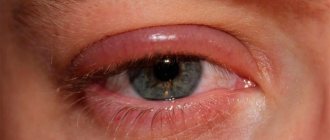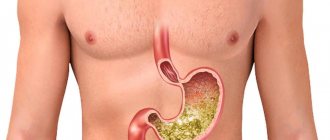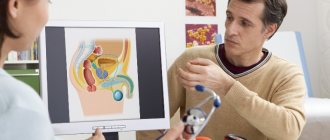There are several reasons for pain in the lower leg area. Here are some of them:
- injury,
- spasm,
- stretching,
- muscle pain after exercise,
- flat feet,
- varicose veins of the lower extremities,
- thrombosis of the veins of the leg,
- obliterating atherosclerosis of the arteries of the lower extremities,
- arterial thrombosis.
The most common causes of acute pain in the lower leg are:
- injury,
- spasm,
- sprain of the musculo-ligamentous apparatus of the leg,
- muscle pain after exercise.
As a rule, in this case, pain in the lower leg appears immediately or after a short period of time after an injury or physical effort. As a rule, such pain goes away within a few hours or days, without leaving any serious consequences. If the pain in the lower leg does not subside over time and does not go away within several days, then it is recommended to contact a general surgeon or traumatologist, who will prescribe the optimal examination and treatment plan.
Anatomy of the lower leg
The leg and ankle are a complex mechanical structure, the correct operation of which ensures full motor activity of the whole organism. There are three bones in the ankle joint. Their interaction must be correct, in combination with the functions of connective tissue elements, ligaments, muscles and tendons.
The foot has 20 bones, 30 joints, 100 muscles, ligaments and tendons. Their work must happen correctly and harmoniously. When at least one function of the general mechanism is disrupted, certain pathological processes begin to develop. They are accompanied by pain in the lower legs.
The shin is the part of the lower limb that connects the knee to the heel. The tibia contains the tibia and fibula, to which the kneecap is attached. Near the heel, these two bones merge into the anterior and posterior malleolus. There are muscles throughout all parts of the lower leg. With their help, the foot bends, extends and rotates. In most cases, the appearance of pain in the lower leg is not associated with serious pathologies. However, the help of a doctor is mandatory.
How to quickly help yourself in case of an ankle injury
If you feel severe pain in your foot due to injury or severe mechanical stress, do the following:
- place your foot on a small hill;
- remain in this position until the pain becomes less intense;
- apply a cold compress of ice wrapped in thick cloth for 20 minutes;
- eliminate the load on the leg, swaddle the injured foot tightly with a bandage (relevant during the first two days);
- As soon as possible, go to the doctor.
A cold compress of ice helps in the first hours after injury
What structures can become inflamed in the lower leg?
Pain in the lower leg and ankle occurs suddenly after an injury - bruise, sprain, fracture, dislocation. It can also be caused by a chronic illness. The following structures can become inflamed in the lower leg:
- Ligaments. They may become inflamed or stretched. When a tendon or muscle is sprained, severe tension occurs. Severe trauma also causes muscle or tendon rupture.
- Joints. Arthritis or arthrosis is a common pathological condition that affects the joints and is accompanied by pain. Ankle pain also often accompanies the development of rheumatoid arthritis.
- Tendons. The most common inflammatory tendon pathology is tendonitis. Also, with constant friction of the tendons and a deficiency of interarticular fluid, bursitis develops. This is accompanied by irritation and discomfort.
- Bones. After an injury, the integrity of the bone is often compromised. This is a fracture or crack. In this case, it is very important to visit a doctor as soon as possible. Only through timely and correct treatment will the bone heal and there will be no consequences of the injury.
- Tarsal tunnel syndrome. It develops when the tarsal tunnel is not pinched. This is a nerve located along the entire length of the lower leg.
- Arch. There are tendons in the leg that work synchronously. This is how the arch is formed. When the tendons are connected correctly, a regular and symmetrical arch is formed. If they are connected asymmetrically, an arch of a small size is formed or it is completely absent. With this condition, discomfort or pain occurs.
- Connective tissue. Connective tissue elements are located on the bottom of the foot. When they become inflamed, it is called plantar fasciitis. This happens when wearing incorrectly selected shoes, too narrow and uncomfortable, or with poor posture.
At-risk groups
Diseases that cause pain behind the knee can be different. In particular, arthrosis, which is more typical for older people, sometimes affects young people, most often after injuries. Athletes who often injure one or another part of their body are most susceptible to it. Also, due to overloads, people with excess weight and loaders should be included in this group. In addition, diseases of this kind can often occur in anyone, especially if the problem tends to be transmitted by heredity. Arthrosis often occurs in female families - scientists believe this is a genetic predisposition, hormonal fluctuations at different periods of a woman’s life, and according to statistics, and as a consequence, a huge proportion of those suffering from pain and joint deformities are women.
Advice. A disease such as osteoporosis is characterized by a lack of calcium and vitamin D in the body and physical inactivity. That is why it is worth monitoring their presence and, if necessary, replenishing their level. This especially applies to those who do not follow proper nutrition, who are prone to alcohol and smoking, as well as other bad habits.
Causes of shin pain
After physical effort or minor injury, the pain usually goes away on its own and does not require specialist intervention. If the pain does not go away within 2-3 days, you need to visit an orthopedist or traumatologist who will help establish a diagnosis and prescribe treatment.
One of the causes of pain is flat feet. With this pathology, the shape of the foot is flattened and irregular. Its functioning is impaired, and the shock-absorbing function of the foot is not fulfilled. As a result, muscles and ligaments experience additional stress, and fatigue appears after walking. In this case, you need to use orthopedic shoes or special insoles.
Varicose veins can cause discomfort in the lower leg. This disease is accompanied by stagnation of blood in the vessels. Its microcirculation is disrupted, the walls of blood vessels are greatly stretched. With venous stagnation, discomfort and pain occur.
To reduce the severity of discomfort, it is recommended to wear special compression products. Vein thrombosis and obliterating atherosclerosis are also diseases of the vascular system. Their development is accompanied by circulatory disorders, blood stagnation, and the formation of atherosclerotic plaques.
Other causes of pain in the lower leg include:
- decrease in the concentration of magnesium, calcium, potassium in the blood. Long-term use of diuretics can provoke such conditions;
- improper use of statins, a side effect is deformation of muscle tissue;
- spasms in muscle tissue after prolonged physical activity;
- ruptures or cracks in the tendons after an injury;
- broken bones, cracked joints;
- meniscal deformation, previous trauma;
- blockage of blood vessels;
- inflammatory process in tendons;
- atherosclerotic disease of the circulatory system with the formation of cholesterol plaques, deterioration of blood outflow;
- infectious processes in tissues;
- damage to nerve fibers, ruptures, sprains or trauma to fibers;
- severe injury or muscle strain, which is accompanied by the development of trap syndrome, compression of the lower leg;
- development of muscle contracture under severe tension or loads;
- inflammatory process in the periosteum of the tibia;
- tears of various types in the muscular system of the lower leg;
- tears of the popliteal ligaments;
- inflammatory process in the kneecap, in the tuberous surface;
- neoplasms of a benign or malignant nature in any part of the leg;
- the use of glucocorticosteroid drugs, in this case pain is a side effect;
- compression of muscle tissue or neurons in tissue.
People who smoke more than two packs of cigarettes a day often experience pain in the lower leg. After quitting the bad habit, the pain of smokers stops on its own. This may be a consequence of stress on the vascular system.
How do you know if your lower leg hurts from venous thrombosis?
Vein thrombosis (or venous thrombosis) is of two types - superficial and deep.
Thrombosis of the superficial veins is manifested by inflammation along the saphenous veins in the form of redness of the skin and a painful cord in this area. In the case of deep vein thrombosis, the disease may not reveal itself externally or may only manifest itself as swelling of the limb. Both superficial and deep venous thrombosis in the legs is a dangerous situation that requires immediate attention to a vascular surgeon.
Venous thrombosis in the legs often develops in people suffering from varicose veins, who have undergone surgery, trauma, as well as in women taking hormonal contraceptives.
Treatment of lower leg pain due to various diseases
Depending on the established diagnosis, doctors draw up a treatment algorithm. Often, pain in the lower leg is caused by increased physical activity and prolonged walking. Therefore, in most cases, after rest, all unpleasant symptoms are eliminated.
To restore the full function of muscles, ligaments, tendons, you will need medication and physiotherapeutic treatment followed by recovery - massages, therapeutic exercises, manual therapy.
To reduce the load on the affected limb, it is necessary to wear special devices. To prevent foot pathologies, doctors prescribe orthopedic shoes or insoles. Doctors can also prescribe anti-inflammatory drugs, muscle relaxants, and chondroprotectors. In severe cases, surgical treatment may be necessary.
How to deal with ankle pain
You shouldn’t fight this joint pain on your own: it’s better to get diagnosed and follow the recommendations of an orthopedist or rheumatologist. The specialist will conduct a physiological examination and collect anamnesis, and prescribe stress tests of the foot. During the examination, the condition and functioning of the nerve roots will also be assessed. If necessary, the patient will be sent for an X-ray or MRI.
The treatment regimen for osteoarthritis is fundamentally different from the treatment for gout or recovery from injury.
In case of injury, the doctor’s actions depend on the type of injury:
- in case of a fracture, a plaster cast is applied to the damaged area, but before this, surgical displacement of the bones is sometimes performed;
- the dislocation is first reduced, then an orthosis with rigid lateral parts or a plaster cast is applied to prevent swelling and properly fix the leg;
- When sprained, soft orthoses or fixing bandages are relevant.
For ankle injuries, it is important to reduce the load on the limb
MBST therapy
With the help of magnetic radiation supplied by the MBST device, the following goals can be achieved:
- improve blood circulation and vascular condition;
- get rid of pain;
- prevent further development of the pathological process.
You can sign up for ankle treatment in Moscow at ArthroMedCenter. A completed course of MBST therapy is a good prevention of arthritis, arthrosis, atherosclerosis, and osteoporosis. After the procedure, blood circulation improves and the walls of blood vessels are strengthened. When undergoing MBST therapy, tissues begin to better absorb calcium, and damage and microcracks are restored faster.
Thanks to an integrated approach to treatment and prevention, you can get rid of unpleasant symptoms and prevent further development of diseases.
Taping
The gastrocnemius muscle is located on the back of the lower leg and consists of two heads that are parallel to each other. They smoothly transition into the Achilles tendon, which is very often injured. Given this structural structure, rehabilitation specialists at the Yusupov Hospital use only Y-tapes or lymph tape for taping the calf muscle. Y-tapes are more effective for sprained or torn ligaments. Lymph tape is used to accelerate the resorption of swelling and hematomas after bruises.
Tape is applied for pain in the calf muscle caused by contusion of muscle fibers, sprain of the calf muscle, tears of ligaments and muscle fibers. If the calf is torn or sprained, you can apply the tape to the calf muscle from bottom to top. In case of a bruise, lymph tape is applied from top to bottom. Before gluing the tape, the hair is shaved off and the surface of the shin is thoroughly wiped with alcohol.
The patient's position should help stretch the muscles of the lower leg - the foot should be in the direction towards itself. This can be done while lying on your stomach with your leg bent and your foot pointing towards you, or standing with your leg back and your heel on the floor.
The doctor selects the optimal tape length. It should correspond to the anatomical length of the calf muscle, taking into account the percentage of elongation of the middle part of the elastic band. The tape is placed from the plantar surface of the heel to the knee joint. The first and last 2-3 cm are glued without tension. When the calf is stretched, a tension of 20-30% is applied, and when there is a bruise, the tape is applied without any tension at all.
The rays of the tape should be located according to the location of the muscle fibers in the calf muscle - along the lower leg. If there are signs of injury to the Achilles tendon at the site of attachment to the calf muscle, apply a short tape perpendicular to the axis of the lower leg.
Panniculitis
Being an inflammatory process localized under the skin, it can provoke the formation of painful balls up to 50 mm in size in the fat layer. The skin swells and becomes bright red. The formations last up to several years, bursting, leaving small depressions on the surface, and the skin becomes covered with dark spots.
The appearance of pathology is accompanied by pain effects, nausea, vomiting, lack of appetite, and increased body temperature of the patient.
Surgical measures
Surgical intervention is a method used in cases of extreme necessity, when therapeutic agents do not bring improvement in the patient’s condition, in emergency cases, in case of bone fracture or open fracture.
Measures to prevent shin injuries include wearing comfortable shoes and warming up the joints before expected loads.
Pain in the leg below the knee occurs very often. A hectic lifestyle leads to the fact that in most cases people do not pay attention to the signals that the body gives. Discomfort in the lower extremities in the front is attributed to overwork. The danger is that such sensations can cause the development of serious diseases, and in the worst case, pathologies. Therefore, if your limbs hurt, you should immediately contact a specialist. A healthcare professional will help identify the cause and select appropriate treatment.
Content










